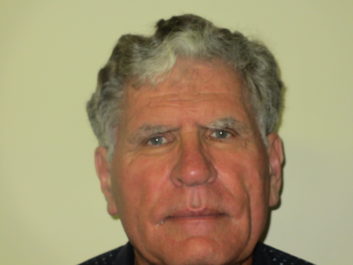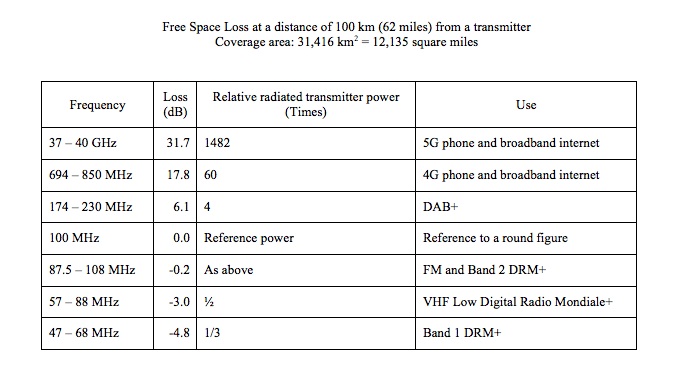The author is a broadcast technical author from Australia and has spent a lifetime in training technicians. Radio World welcomes opinions and points of view on important radio broadcast industry issues.
The article “Does 5G Make Sense for Radio?” written by Chris Weck, is an excellent in-depth piece, to which I would like to add some additional facts.
 Please look at the Youtube video soon as they may take it down.
Please look at the Youtube video soon as they may take it down.
For 5G to get the high data rates boasted, the transmission frequency has to be the highest frequency used by the public with the exception of light. It is 39 GHz. At these frequencies the signals will not penetrate anything other than vacuum and air. Not buildings or terrain. Look at this promotional video made by Verizon https://youtu.be/jnyG2bliKCs It has been carefully crafted to not show the downsides of such a high frequency;
Example 1
How far does it travel? 915 m (ie. less than a kilometer!) Note that he had to increase the height to get line of sight back to the base station!
Example 2
Foliage. The video was shot on a fine day, he makes no mention of what happens when the foliage is wet or the absorption of the signal in heavy rain.
Example 3
Trick Shots. One example in the right locations cannot be generalized to say it will work everywhere. What about hills?
Example 4
Walls. Notice that the base station is visible through the window and is not far away and the signal goes around a wall to a modem/router, which then converts the signal Wi-Fi, meaning it can go through walls in a building. What proportion of houses already have this connection already? What would have happened if the tower was on the other side of the building?
Beamforming requires the signal to be delayed until the beam is in your direction, just like a lighthouse. This is in addition to the variable delay caused by a myriad of possible paths to the base station from the studio. The radio will have to store the incoming data until it receives all the time labelled packets to decode them in time order.
Some telcos are over promoting 5G to sell phones, which will spend nearly all of their life operating in 3G and 4G mode. Even if the telcos start in the 3.6 GHz band there is around 60 MHz per direction available and it is incapable of the speeds shown above.
The United Nations’ Telecommunications Union says “At the ITU World Radiocommunication Conference 2019 (WRC-19), global stakeholders are working towards building consensus on additional spectrum for IMT. Taking place in Egypt from Oct. 28 to Nov. 22, WRC-19 will consider new allocations to the mobile service and identification for IMT of frequencies within the following frequency ranges: 24.25 – 27.5 GHz, 31.8 – 33.4 GHz, 37 – 40.5 GHz, 40.5 – 42.5 GHz, 42.5 – 43.5 GHz, 45.5 – 47 GHz, 47 – 47.2 GHz, 47.2 – 50.2 GHz, 50.4 GHz – 52.6 GHz, 66 – 76 GHz, and 81 – 86 GHz.”
It can be seen that as the frequency rises a greater range of frequencies is available hence the greater the data speeds which can be achieved, remembering that that bandwidth has to be shared between the users of that repeater at that point in time. In addition the higher the frequency the greater are the propagation effects shown in examples 1–4 above.
With all of the above constraints in the 39 GHz band, they frequently show base stations on poles on street verges which will have to be much less than a kilometer apart all of which have to be connected to the network using fiber optic which could already be going to houses already. The competitor to this is fiber to the premises which can also achieve these speeds using multi-colored lasers, and it is not affected by the environment or even Fiber to the Curb is fast enough for most people.
Not mentioned is what happens if there is a power failure in the street or city. No emergency messages will be relayed to smart speakers or phones.
Weck, also mentions propagation losses. The line of sight losses in dry air are frequency dependent.

The frequency used is the center of each band. VHF Low is available in the Americas and Band 1 elsewhere in the world.
The radiated power is controlled by the antenna gain, the cable loss to the antenna and the transmitter power.
The higher the frequency the more that rain absorbs the signal as it does with blocked paths.
Remember that DAB+ and DRM are both capable of transmitting data such as images, multipage text and traffic data for vehicles as well as hyperlinks.
The huge losses for 5G makes a single transmitter/receiver site for the 100 km radius impossible, hence the need for thousands of low-powered transceivers on street poles.
Lastly broadcasting is essentially a one-way communication to all listeners, which can reliably transmit emergency messaging to the whole population.
Mobile/cell phone systems are designed to be a two-way communication to an individual, when used by a broadcaster, each listener has their own bidirectional channel, which is hardly used in the return direction. This is very wasteful of spectrum, hardware and electricity and will cost the listener dearly. In addition, 5G is incapable of reliably messaging the population in an emergency.












